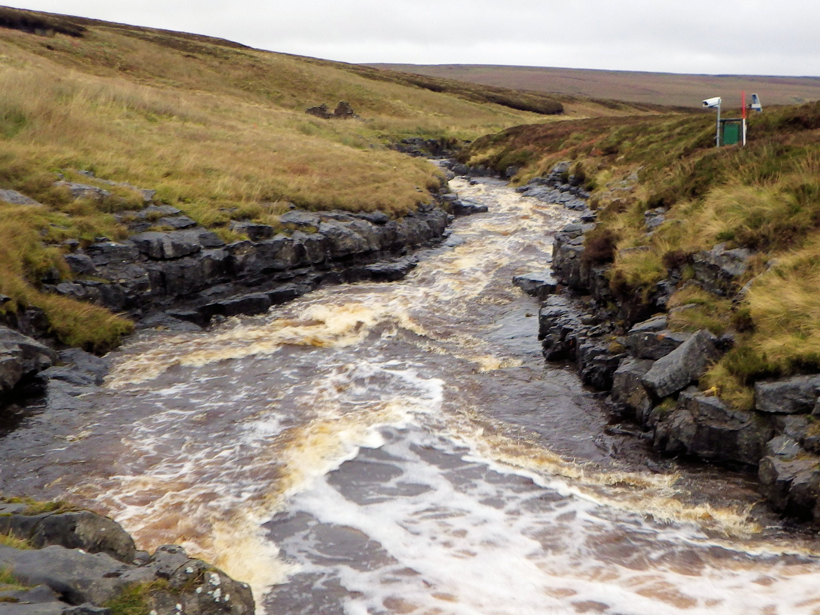Source: Water Resources Research
Several centuries of scientific inquiry into the factors that control a river’s velocity and depth have focused almost exclusively on alluvial rivers, whose channels host loose sediment. To date, few field data exist on the hydraulics of bedrock rivers, rivers that lack loose sediment at their bottoms.
For these rivers, not much is known about the resistance of their channels to flow. Most landscape evolution models consequently use standard assumptions about alluvial rivers to estimate the erosive force exerted on a rock bed.
To evaluate whether these suppositions are appropriate, Ferguson et al. measured how water velocity, depth, and flow resistance varied with discharge along short (24- to 28-meter) stretches of a bedrock channel on Trout Beck, a small river in northern England’s Pennine Hills. Of the five evaluated stretches, one bed consisted of bare limestone, one was filled entirely with alluvium, and the other three were partially (20%–70%) covered with sediment varying from fine to coarse in size.
The team found systematic differences in flow resistance between the five reaches, with the highest values observed in the partially covered stretches hosting the most coarse and extensive sediment cover. In each of the four alluvial stretches, the researchers observed a rapid increase in velocity and a strong decrease in standard resistance parameters with increasing discharge. Although the bare limestone channel followed the same trend from low to medium discharges, it experienced greater resistance at higher discharges because of the roughness of the channel’s irregular rock walls.
To test the general applicability of these findings, the authors advocate collecting additional measurements in larger bedrock channels and in those whose floors vary in roughness. If these results are consistent, the team argues that current assumptions about flow resistance in incision and landscape evolution models will need to be reevaluated because many of them assume constant flow resistance parameters. (Water Resources Research, https://doi.org/10.1002/2016WR020233, 2017)
—Terri Cook, Freelance Writer
Citation:
Cook, T. (2017), How do rivers flow over bedrock?, Eos, 98, https://doi.org/10.1029/2017EO072967. Published on 08 May 2017.
Text © 2017. The authors. CC BY-NC-ND 3.0
Except where otherwise noted, images are subject to copyright. Any reuse without express permission from the copyright owner is prohibited.

